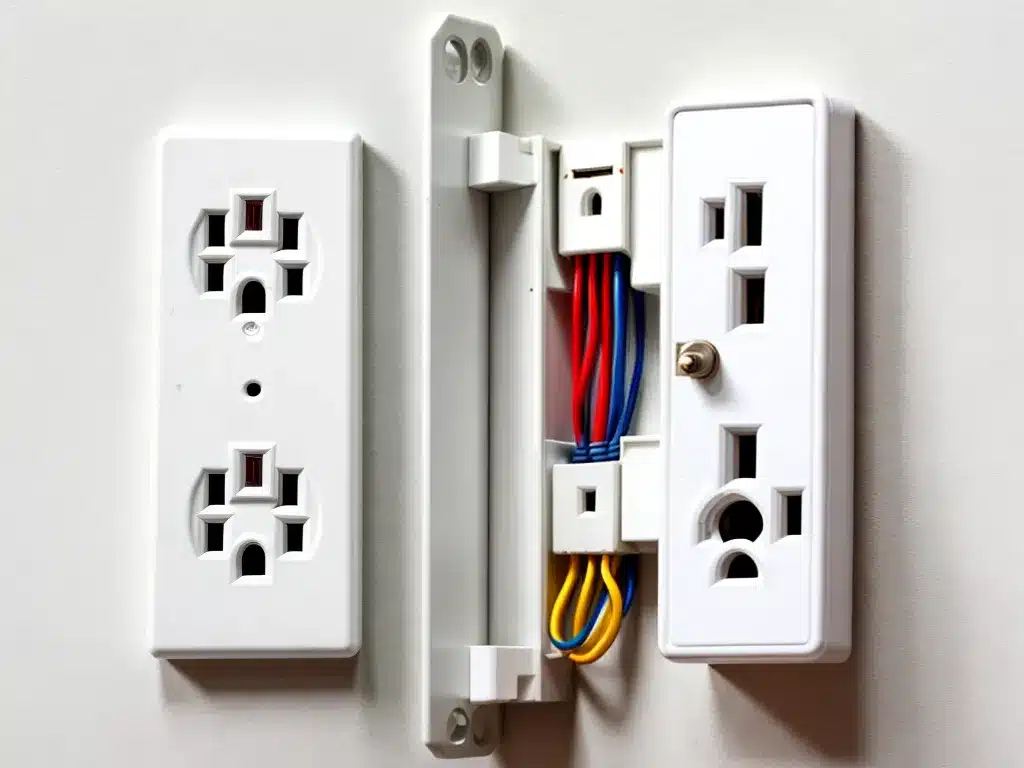
Upgrading from 2-prong to 3-prong outlets can provide enhanced safety and allow you to plug in 3-prong appliances. However, it’s crucial that this electrical work is done properly to avoid risks like shock, fires, and damage to equipment. In this guide, I cover everything you need to know to safely convert your home’s outlets from 2-prong to 3-prong.
Why Upgrade to 3-Prong Outlets?
There are two key reasons I recommend upgrading 2-prong outlets to 3-prong:
Improved Safety
3-prong outlets provide grounding, which gives electricity a safe path to flow back to the breaker panel. This helps prevent electric shocks and reduces risk of fires.
Grounded outlets are now standard in modern homes. Replacing ungrounded 2-prong outlets improves safety.
Compatibility
Many modern appliances and electronics require a 3-prong grounded outlet to plug in safely. Upgrading allows you to plug these items in without an adapter.
Trying to plug a 3-prong appliance into an ungrounded 2-prong outlet can damage the equipment or cause it to not function properly.
Dangers of Improper 3-Prong Conversions
While 3-prong outlets are safer, improperly converting can be extremely hazardous. If not done correctly, risks include:
- Electric shock – Dangerous contact with live wires
- Fires – Faulty wiring can overheat and ignite fires
- Equipment damage – Surges can damage electronics and appliances
Doing your own electrical work requires skill, knowledge of electrical codes, and extreme care. Consider consulting a licensed electrician before attempting this project yourself.
How to Convert From 2-Prong to 3-Prong Outlets
Converting outlets requires understanding your home’s electrical system and installing new wires. Here are the key steps:
1. Check the Electrical Panel
The first thing I do is go to the main electrical panel and see if my home already has a grounding wire. Many older homes don’t.
Look for a thick bare copper wire connected to the neutral bus bar in the panel. If present, your home may already be grounded, making conversions easier.
2. Upgrade the Wiring
If no ground wire exists, I now have to run new wires from the outlet to the panel:
- Hot – Black wire carrying current
- Neutral – White to complete the circuit
- Ground – Bare copper wire
I turn off the home’s main breaker before doing any work.
I fish the new wire through walls and attach it securely to the outlet, outlets down the run, and back to the service panel.
3. Install the New Outlet
With the wiring complete, I install the new 3-prong outlet, connecting:
- Black wire to hot brass terminal
- White wire to neutral silver terminal
- Bare wire to ground green terminal
I make sure connections are tight and no copper is exposed.
4. Connect to Ground
Finally, I connect the ground wire to the grounding bus bar or metal water pipe in the service panel. This completes the grounding pathway.
I can then turn the power back on and use my new 3-prong outlet safely!
Tips for a Safe 3-Prong Conversion
To keep myself and my home safe when converting to grounded outlets, I follow these best practices:
- Use thick 12 or 14 gauge wires capable of high amperage
- Label all wires to avoid confusion
- Only work on 1 circuit at a time to avoid crossover
- Double check connections are tight before restoring power
- Test outlets with a multimeter to ensure proper grounding
- Hire an electrician if I’m uncomfortable doing it myself
Converting outlets provides safety benefits, but only if done correctly. Taking precautions keeps me, my home, and my appliances protected.
Frequently Asked Questions
Do I need a permit to upgrade outlets?
In most cases, yes. Building codes require an electrical permit when installing new wiring and outlets. I check with my local permitting office first.
Should every outlet in my home be 3-prong?
For full safety, yes. I recommend upgrading all outlets to grounded 3-prong, especially those powering major appliances like refrigerators, stoves, washers, and electronics.
What if the wires are too short to reach the panel?
This may require running entirely new wires long enough to extend back to the service panel. Hiring an electrician is best if extensive rewiring is needed.
Can I just replace a 2-prong outlet with a 3-prong without rewiring?
Absolutely not. The 3rd prong must be properly grounded for safety. Simply replacing the outlet without grounded wires is dangerous and against electrical code.
Conclusion
Upgrading 2-prong outlets is worthwhile for safety and compatibility with modern devices, but only when done properly. Key steps include checking for existing ground wires, running new 3-wire cables, securely connecting wires, and verifying grounding. With the right knowledge and precautions, I can safely convert the outlets in my home.
